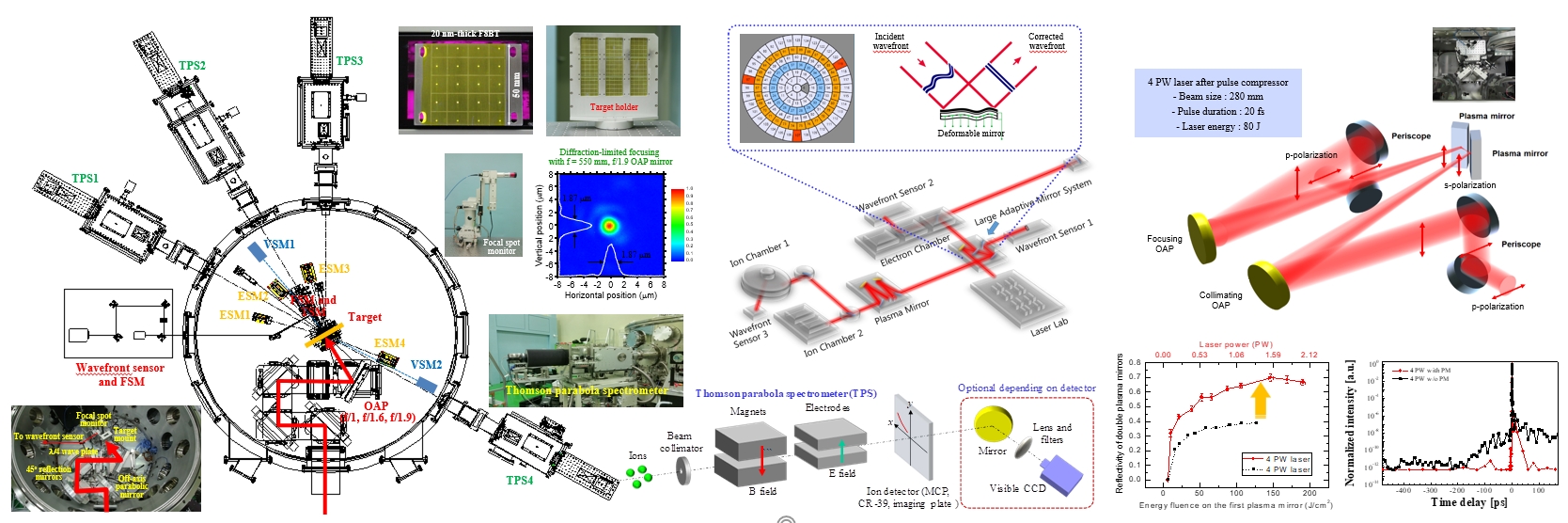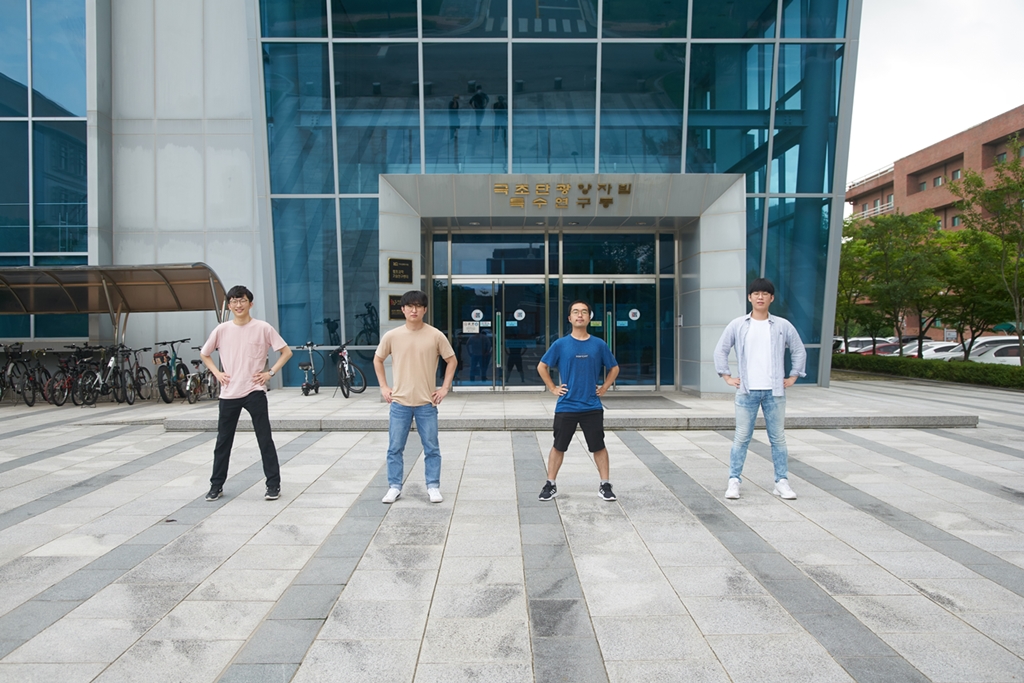Center for Relativistic Laser ScienceExplore the interaction between ultra-intense light and matter
mainmenu
▪ Research Goal
· Development of laser-driven ion accelerator: proton(>200 MeV), carbon ion(>100 MeV/u), High-Z heavy ion(>10 Mev/u)
· Applications of ion sources, employing the unique properties of ultrashort pulse duration and small spatial size at its source
position, low position, low emittance and good laminarity, and high particle number in one bunch

▪ Research Topics
· Study of ultraintense laser-plasma interactions required for laser-driven ion acceleration
· Exploration of laser-driven ion acceleration and its applications using a multi-PW laser
· Spatiotemporal control and engineering of focused laser beam using plasma mirror, adaptive optics, phase plate for exotic
(Laguerre-Gaussian) beam
· Development of various diagnostics: characterization of electromagnetic radiations, electrons, and ions

▪ Major Research Results
· The highest proton energy of 93 MeV using a petawatt Ti:sapphire laser has been demonstrated. I J. Kim et al.,
Physics of Plasmas 23, 070701 (2016).

· Transition of proton energy scaling from I1/2 to I was observed as a consequence of hybrid acceleration mechanism. (I J. Kim et al.,
Physical Review Letters 111, 165003 (2013).)
· Ultrahigh-contrast multi-petawatt laser pulse with > 1012 contrast ratio was obtained in a petawatt double plasma mirror system with
high reflectivity of 70%. (I.W. Choi et al., Optics Letters 45, 6342 (2020).)
· Laser-driven ion diagnostics have been developed: Thomson parabola spectrometer, stacked layer detector composed of range filters
and ion detectors, nuclear activation-based imaging spectrometer.

▪ Research Group




